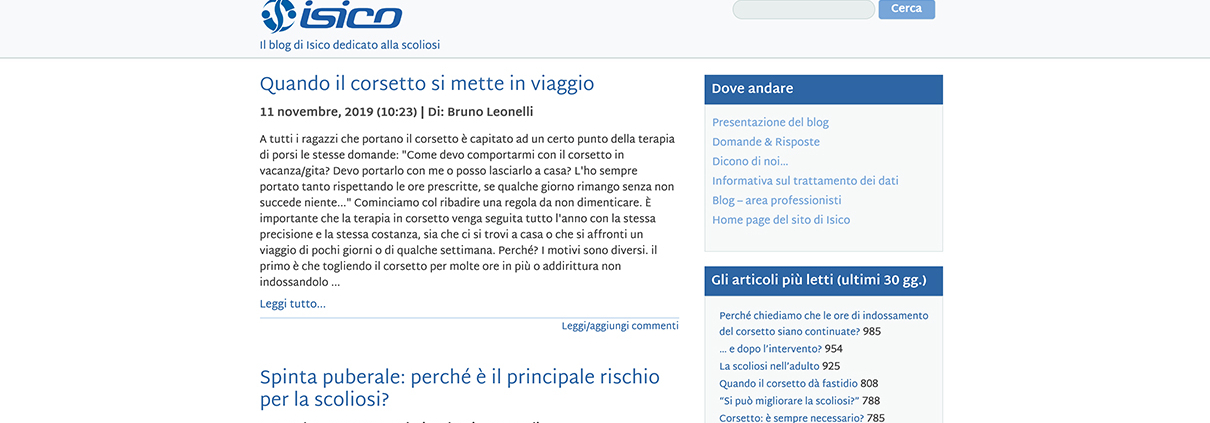www.scoliosi.org: the Isico blog that gives patients a voice!
Over the past 13 years or more, we have published dozens of posts and thousands of comments on our forum dedicated to scoliosis.
The Isico forum is a dedicated space where patients can ask questions and swap experiences, but it is also a place where those involved in treating scoliosis can take a more in-depth look at a series of topics and also engage with patient. Here is one of our published posts.
Will the hump disappear once the brace is on?
This question, together with others linked to aesthetic concerns, is often asked by parents and by youngsters about to start wearing a brace. After all, scoliosis is characterised by variable and sometimes marked clinical signs at the level of the trunk. The scoliotic hump, linked to the spinal rotation component of the disease, becomes evident on bending forwards, but in some individuals it is also visible when standing. Changes in scoliosis have been found to be correlated with changes in the hump, although this is not to say that a given degree of change will necessarily be proportional to a worsening or improvement of the hump; that said, a modification of the hump can usually be taken as a sign that the scoliosis has changed.
Clinical monitoring of the hump at medical checkups is therefore important during brace treatment, in order to establish whether there has been any reduction.
Bracing is a treatment that has two equally important objectives:
• to stabilise or (when possible) improve the radiographic picture
• to improve the appearance of the back
Essentially, the corrective force applied by the brace to the trunk serves to reduce the rotation of the vertebrae, in an effort to limit this particular contributing factor, and shape the ribs and/or lumbar musculature, in order to reduce the aesthetic impact of the curve. All these aspects will vary according to the type of brace, the experience of the orthopaedic technician who built it, the specific characteristics of the single spine and, last but certainly not least, the patient’s compliance with the treatment.
As we have said, clinical monitoring of the hump at medical checkups is important, but the importance attached to this aspect should not be taken to mean that vertebral rotation always has an aesthetic impact and therefore constitutes an “enemy” to be fought at all costs.
In reality, in most cases, the problem is visible only to the trained eye of expert clinicians (doctors and physiotherapists), and parents and youngsters learn to see only it after the condition has been diagnosed and pointed out to them.
This is borne out by the fact that parents at the first consultation will often admit that, until then, they had never been aware of their child’s scoliosis and the associated aesthetic changes. For this reason, they often have the impression that “the whole problem sprang up overnight”.
In fact, wearing a brace is a great way of learning not to care about how others may judge you. It will help you to make sure you only spend time with real friends, those who you know you can always count on! Unfortunately, nothing comes easy in life, and making friends takes time and effort, but you have to be prepared to persevere in order to see the results, just like with your brace!
The people who stick up for you and support you when things are tough are your real friends. As for the rest, take no notice of them. They are just people you happen to know!




Leave a Reply
Want to join the discussion?Feel free to contribute!